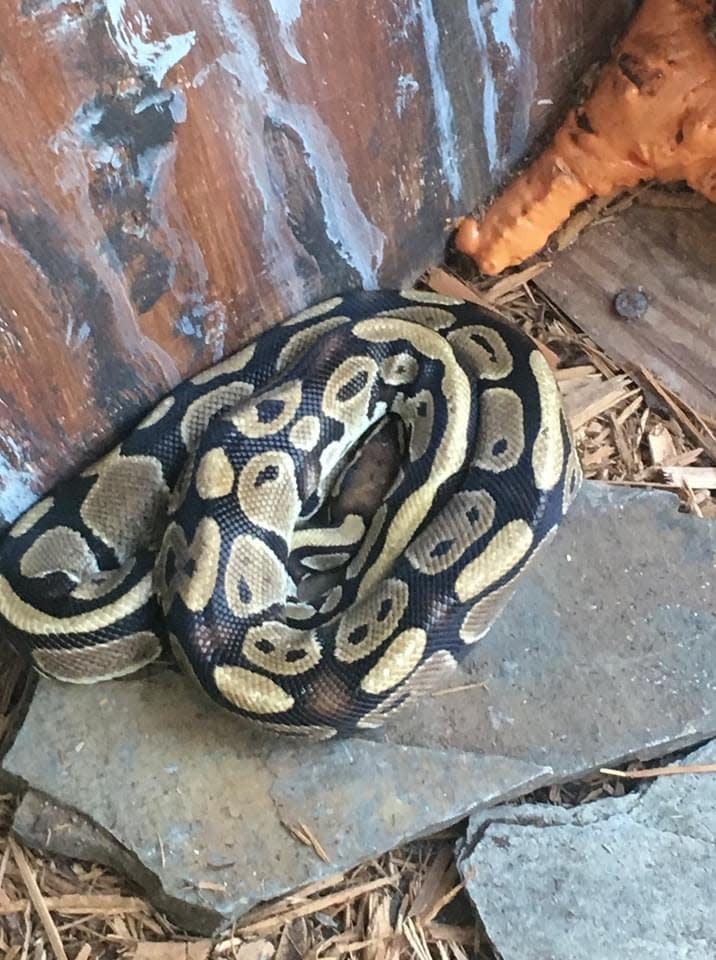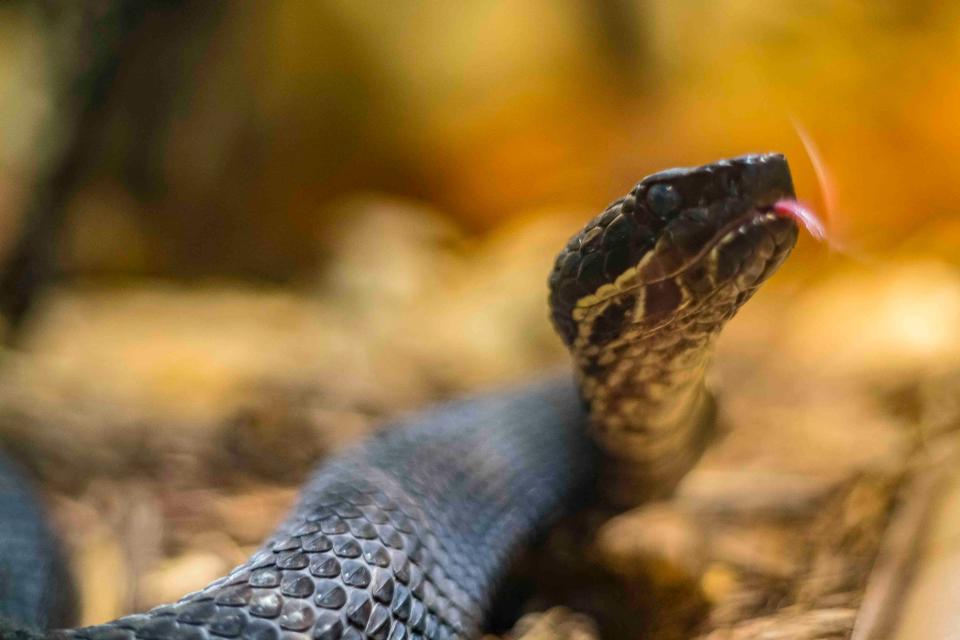Ball pythons invaded a Florida neighborhood. How are they different from Burmese pythons and are they dangerous?
One Florida neighborhood had some quick flashes of color slithering by their homes recently.
Residents of a St. Augustine community caught 22 ball pythons roaming around their Prairie Lakes homes last month, with experts still tracking down the sudden source of the snakes.
Experts say the snakes aren't wild and are considered invasive species In the meantime, Sky Bennett with Jacksonville's Herpetology Society is taking the snakes for examination once they are caught.
"I'll take them into the vet, get them looked at, make sure they don't need any medical attention until I get them all adopted out," Bennett said.
The Florida Fish and Wildlife Conservation Commission says a law enforcement officer visited the neighborhood but has not identified where the snakes came from. FWC says the ball pythons likely escaped or are released pets.
It's also noted that these aren't your typical ball pythons, experts spotting more unusual colors. However, sometimes the snakes are mistaken for the infamous Burmese python, which has reined its terror on the lower half of the state.
Burmese vs. Ball — Here's how to spot the key differences between the two sought-after snakes.
Longest Burmese python caught in Naples: 'It was insane': Hunters capture longest Burmese python ever recorded near Naples, Florida
Do they visibly look any different from each other?
With a quick glance, one could easily mix up a ball python and a smaller Burmese python. Upon a closer look, these two snakes have more differences than one might think.

According to the Florida Fish and Wildlife Conservation Commission, ball pythons have light tan markings on a dark background. Their blotches are rounded and resemble dumbbells or alien heads
Due to their popularity as a pet, they have also been bred to exhibit many colors and patterns. Dozens of different ball python morphs exist today.
For Burmese pythons, they are tan in color with dark blotches along the back and sides. The blotches look like puzzle pieces or the markings on a giraffe. They have a pyramid-shaped head with a dark, arrowhead-shaped wedge extending toward the nose.
Taking over South Florida: Burmese pythons in Florida: Here's everything you need to know about the invasive snakes
How big does each python get?
The most notable difference between Burmese and ball pythons is their size.
Burmese pythons typically grow to 16 feet long, weighing 200 pounds, with the largest Burmese python ever measured caught at 19 feet in Naples on July 12 of this year.
However, the smaller ball pythons are usually only 4 feet long and about 7 pounds, sometimes seeing 6 feet at the largest per FWC.
Where are their native habitats?
Ball pythons are native to Western and Central Africa, with the Lehigh Valley Zoo confirming that they can be found primarily in Benin, Ghana, and Togo. The larger Burmese python is found in India, lower China, the Malay Peninsula, and some islands of the East Indies.
Do I want either of them slithering around in my backyard?
Not at all.
Both snakes are not native to Florida's ecosystem, with the Burmese python considered an invasive species per the FWC. They are not protected in Florida except by anti-cruelty law and can be humanely killed on private property with landowner permission.
The Burmese python can be captured and humanely killed year-round without a permit or hunting license on 32 Commission-managed lands in South Florida. Residents can also compete in a state-sponsored Python Challenge that offers cash prizes to participants, which runs from Aug. 4 to 13.
What do they typically eat?
In Florida, Burmese pythons have been found to prey upon a variety of mammals, birds, reptiles even alligators. Ball pythons consume small prey, such as rodents, birds, amphibians, and shrews, to maintain optimum weight.
How long do they usually live?
Burmese pythons can live roughly 20 to 25 years, whereas ball pythons can live for over 30 years in captivity.
What is their behavior like?
According to experts on Spruce Pets, Burmese snakes are actually docile for their size. However, they mention the semiaquatic snakes are aggressive feeders. If owners only handle the snake or open its enclosure at meals, it may associate them with food.
"Handle these snakes frequently from a young age, or else they will be challenging to hold as they get larger," Lianne McLeod, DVM wrote. "Touch the snake gently but firmly and be persistent if it resists at first. Avoid handling your snake for a couple of days after feeding, or it may regurgitate."
Ball pythons are also known to be friendly and easy to handle. They do get their name because, when threatened, they roll themselves into a tight ball, tucking their head inside their coils.
What other species can be confused with the Burmese python in Florida?

While most recognize that the 18-foot, 200-pound snake slithering in their backyard is a Burmese python that doesn't belong in Florida, smaller pythons can be mistaken for several native snakes, such as:
Coachwhip
Eastern diamondback
Red rat snake
Cottonmouth
Eastern Indigo snake
Water snake
Learn about these native species: How to differentiate native Florida snakes from invasive Burmese pythons
How to report ball pythons and Burmese pythons
FWC says if you have a non-native species, not to let it loose, and if you come across one, report it to its Invasive Species Hotline immediately at 888-Ive-Got1 (483-4681), along with providing an exact location and photos. Sightings of other non-native species can be reported online at IveGot1.org or by using the free IvetGot1 app.
This article originally appeared on Fort Myers News-Press: Pythons in Florida include Burmese and ball: What are the differences?

